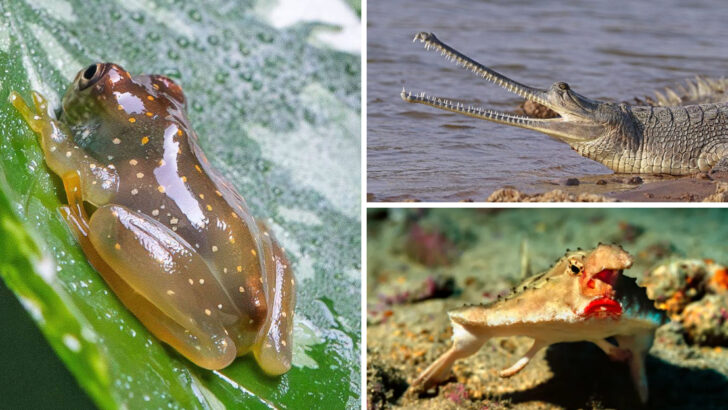Some animals look like they stepped straight out of a science fiction film. No, seriously—they’re so strange, they could easily be alien species in a futuristic universe.
With their bizarre shapes, colors, and features, these creatures are proof that nature has a wild imagination. From creatures that glow in the dark to animals with limbs that don’t even seem possible, they’ll leave you questioning what’s real.
These animals are more than just weird—they’re mesmerizing, strange, and otherworldly in the best way. Who knew that the most jaw-dropping creatures didn’t come from outer space, but right here on Earth?
Ready for a mind-bending ride through the animal kingdom’s weirdest? Let’s dive into the world of surreal-looking creatures that look straight out of a movie.
Axolotl
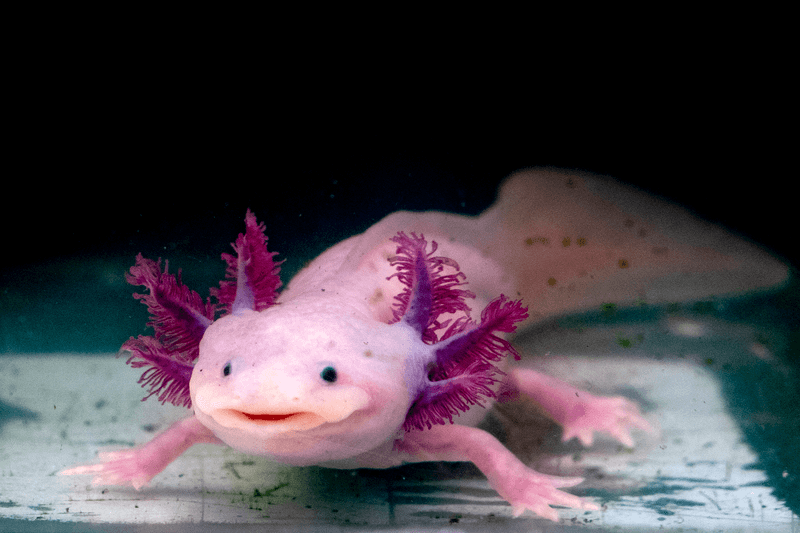
The axolotl is a mesmerizing aquatic creature that captures attention with its external feathery gills and perpetual smile. This amphibian, native to Mexico, possesses the unique ability to regenerate lost body parts, making it a subject of scientific fascination. Its soft, pinkish skin and delicate gills give it an ethereal appearance, often compared to mythical creatures in folklore.
Despite its charming look, the axolotl faces threats from habitat destruction and pollution. Conservation efforts are vital to preserve this species, ensuring it continues to enchant those who encounter it. These strange beings seem otherworldly as they float gracefully.
Narwhal
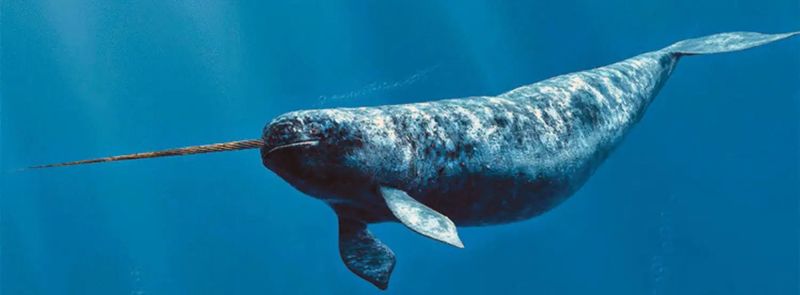
Known as the unicorn of the sea, the narwhal boasts a long, spiraled tusk that evokes the fantasy creatures of legend. This toothed whale resides in the frigid waters of the Arctic, where its tusk is not merely decorative but serves a sensory function. Scientists believe it detects changes in the environment, aiding in survival.
The narwhal’s elusive nature and remote habitat add to its mystique, making sightings rare and special. Its gentle, slow movements through icy waters are a testament to the adaptability and resilience of nature’s most peculiar creations.
Leafy Sea Dragon
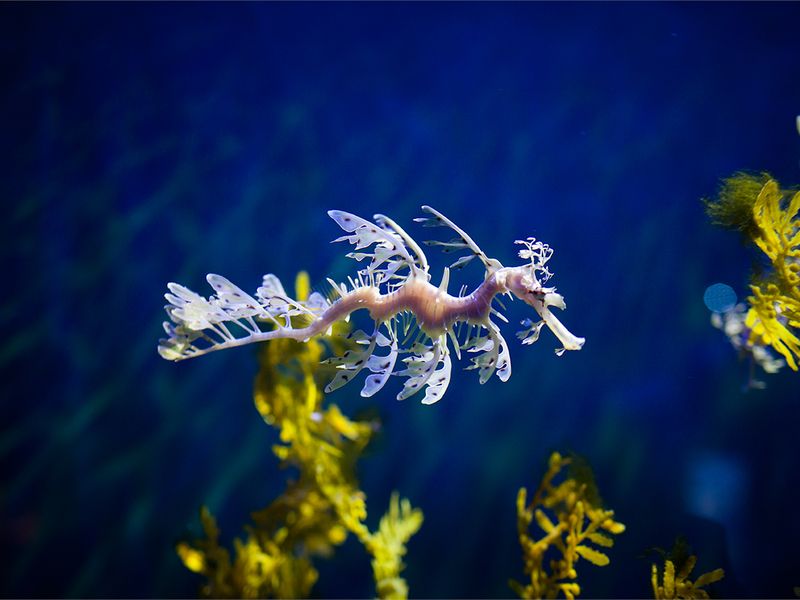
The leafy sea dragon is a master of disguise, seamlessly blending into its seaweed home with leaf-like appendages. Found off the coast of Australia, this seahorse relative captivates with its delicate, ornate body that sways with underwater currents. Its vibrant colors and wispy fins create an illusion of floating plant life.
Though it appears fragile, the leafy sea dragon is a robust survivor in its specific marine niche. Conservation efforts are crucial to protect their habitat from pollution and climate change, ensuring these surreal creatures continue to grace the oceans with their presence.
Shoebill Stork
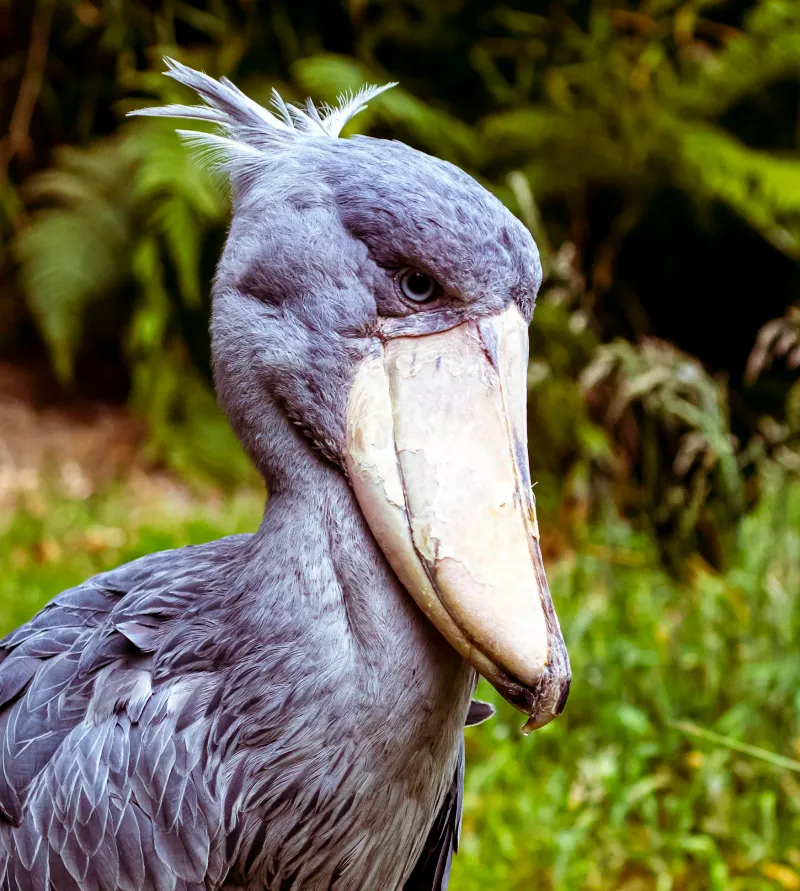
With its massive shoe-shaped bill and prehistoric demeanor, the shoebill stork is a bird that commands attention. Found in the swamps of central Africa, this solitary hunter preys on fish and amphibians, its powerful beak snapping shut with impressive force.
The shoebill’s slow, deliberate movements and statuesque pose contribute to its enigmatic presence in the wild. Known for its grumpy appearance, this bird’s peculiar expression belies its patient, stealthy nature. Efforts to maintain wetland ecosystems are vital to ensuring the survival of these majestic, ancient-looking birds.
Aye-Aye
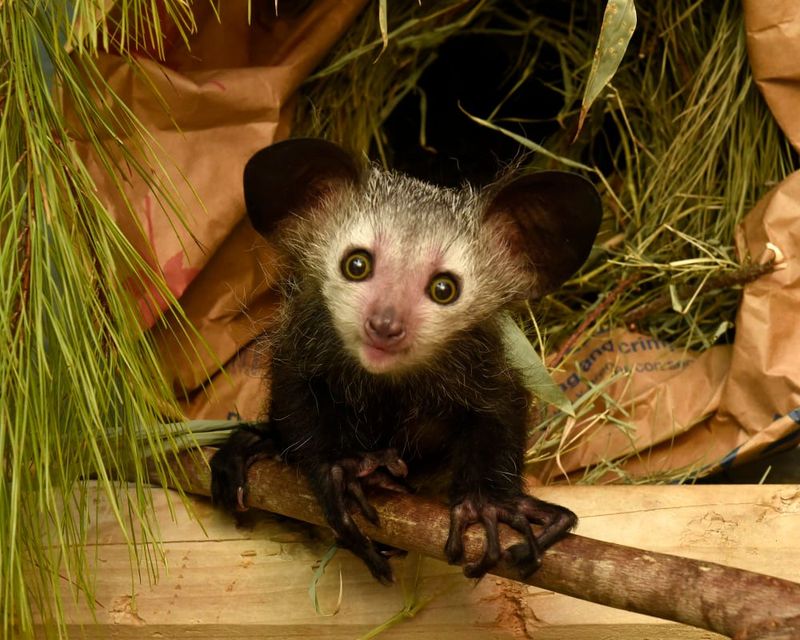
The aye-aye is Madagascar’s nocturnal enigma, a lemur with bizarre features that set it apart. Its large, inquisitive eyes and elongated middle finger make it an expert insect hunter. The aye-aye taps on tree trunks to locate grubs, using its specialized finger to extract them.
This creature’s unusual appearance and behavior have led to myths and superstitions, yet it plays a crucial role in its ecosystem. Conservation initiatives work to protect the aye-aye from habitat loss and human threats, preserving the mystery and wonder of this unique primate.
Glass Frog
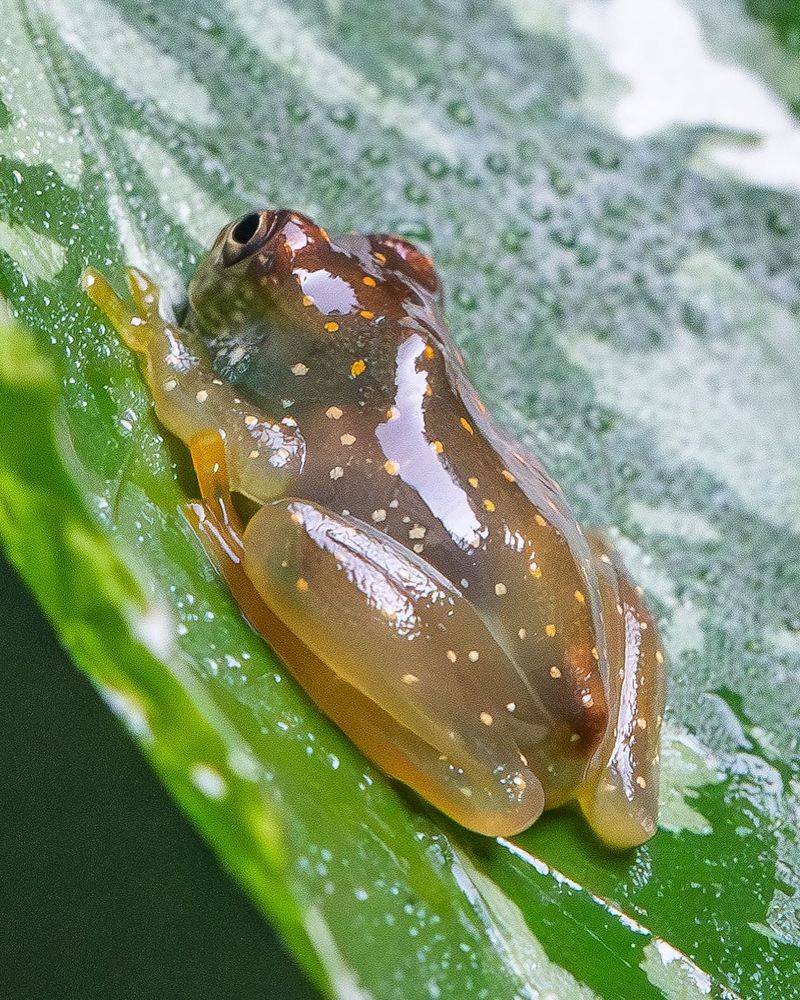
The glass frog is a translucent wonder, its skin so clear that its internal organs are visible beneath. Residing in the rainforests of Central and South America, this tiny amphibian uses its unique appearance as camouflage against predators.
Its transparency is not just a visual marvel but a survival mechanism in the dense jungle environment. Researchers study the glass frog to understand more about transparency and adaptation in nature. Protecting their rainforest habitat is essential for the continued survival of these fascinating, see-through frogs.
Mantis Shrimp
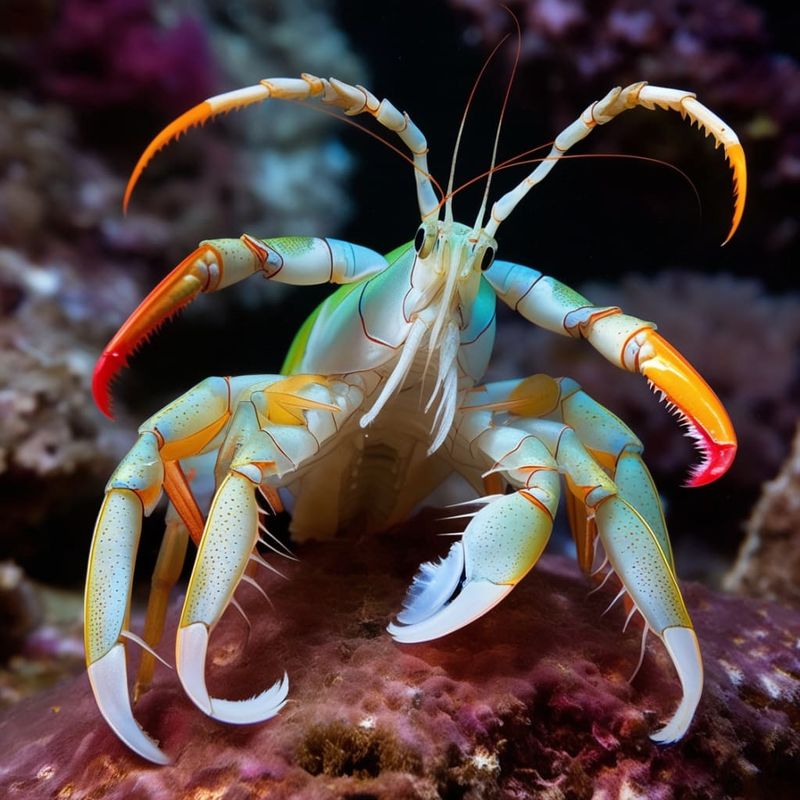
The mantis shrimp is a small but mighty marine creature, known for its striking colors and powerful punch. This crustacean wields club-like appendages that strike with the speed of a bullet, capable of breaking shells and even glass.
Residing in tropical and subtropical waters, the mantis shrimp also boasts one of the most complex visual systems in the animal kingdom, perceiving polarized light and detecting a vast array of colors. Their vivid appearance and extraordinary abilities make them a staple of marine fascination, showcasing nature’s ingenuity in the depths of the ocean.
Platypus
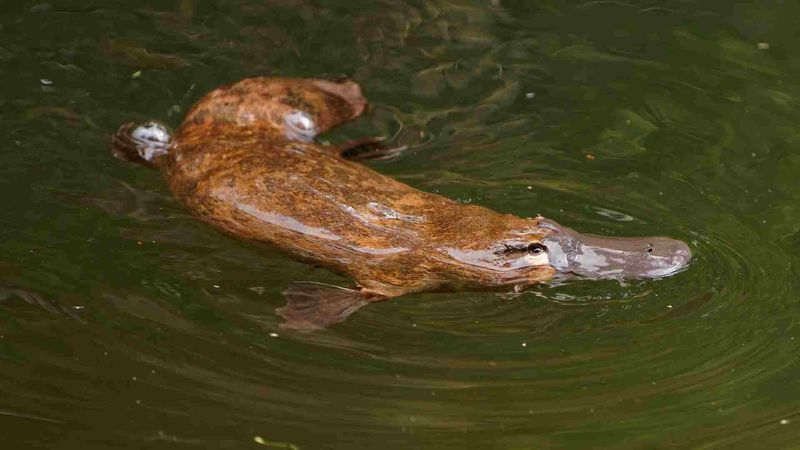
The platypus is nature’s paradox, a mammal that defies categorization with its duck-bill, webbed feet, and egg-laying ability. Found in the rivers of eastern Australia, it showcases a blend of features typically associated with birds and reptiles.
Its sensory bill detects electrical signals, aiding in hunting underwater. The platypus’s peculiar attributes and unique reproductive methods have made it an icon of evolutionary biology. Efforts to preserve their aquatic habitats are crucial for maintaining the populations of these extraordinary, enigmatic mammals that continue to intrigue scientists and nature enthusiasts alike.
Saiga Antelope
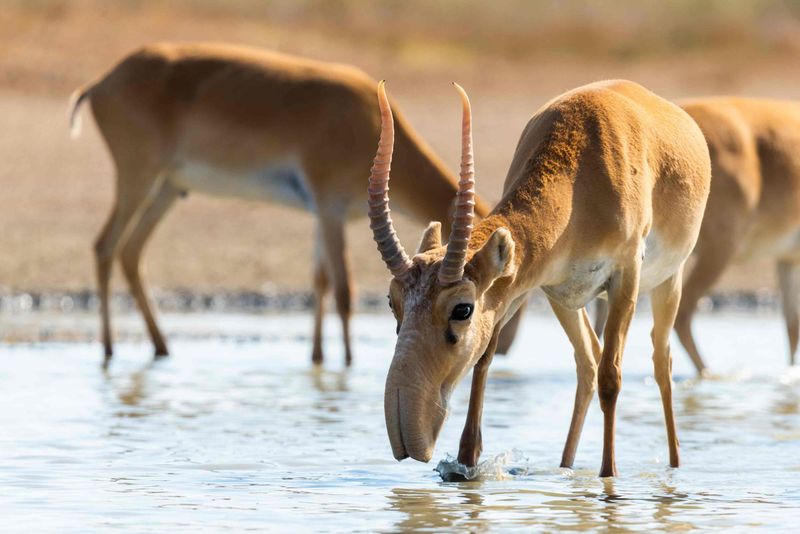
The saiga antelope is an oddity of the grasslands, distinguished by its large, bulbous nose that filters dust and regulates body temperature. Inhabiting the vast steppes of Central Asia, this antelope’s appearance is as functional as it is peculiar.
Its distinctive nose plays a crucial role in adapting to extreme climates, emphasizing nature’s ability to tailor creatures to their environments. Unfortunately, the saiga faces threats from poaching and habitat destruction. Conservation efforts aim to protect these unique antelopes, ensuring their peculiar forms continue to wander the expansive plains.
Star-Nosed Mole

The star-nosed mole is a marvel of sensory adaptation, its star-shaped nose renowned for being one of the most sensitive touch organs in the animal kingdom. This small mammal, inhabiting damp lowland areas of North America, uses its unique nose to hunt in darkness.
Each fleshy appendage on its nose is covered with sensory receptors, allowing it to detect prey with remarkable precision. The star-nosed mole’s extraordinary anatomical feature is a testament to the diverse strategies of survival employed by wildlife. Protecting wetland environments is key to the conservation of these subterranean sensation seekers.
Japanese Spider Crab
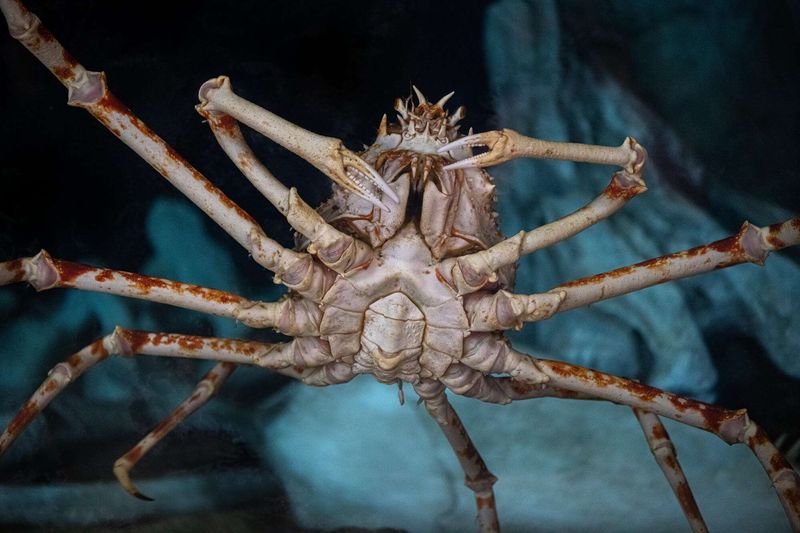
The Japanese spider crab is the ocean’s giant, with limbs extending up to twelve feet, making it the largest arthropod. These crabs dwell in the depths of the Pacific Ocean near Japan, inhabiting rocky ocean floors.
Their long, spindly legs and armored bodies create a startling silhouette that seems derived from deep-sea horror tales. Despite their intimidating appearance, they are gentle scavengers, contributing to the ocean’s ecological balance. Ensuring the health of marine ecosystems helps preserve the existence of these colossal, awe-inspiring creatures that roam the ocean depths.
Okapi
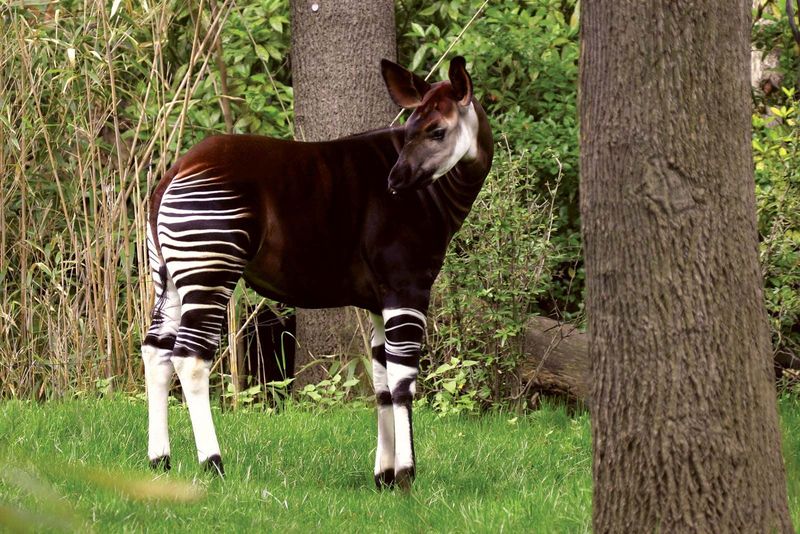
The okapi is a cryptic dweller of the Congo rainforests, resembling a cross between a giraffe and a zebra. With its long neck and striking striped legs, the okapi is adept at blending into its lush surroundings.
Though related to the giraffe, its unique appearance sets it apart as an evolutionary marvel. The okapi’s elusive nature and remote habitat make it a symbol of the mysteries that forests hold. Efforts to protect the Congo rainforest are crucial for the survival of these enigmatic creatures that offer a glimpse into nature’s creativity.
Blobfish
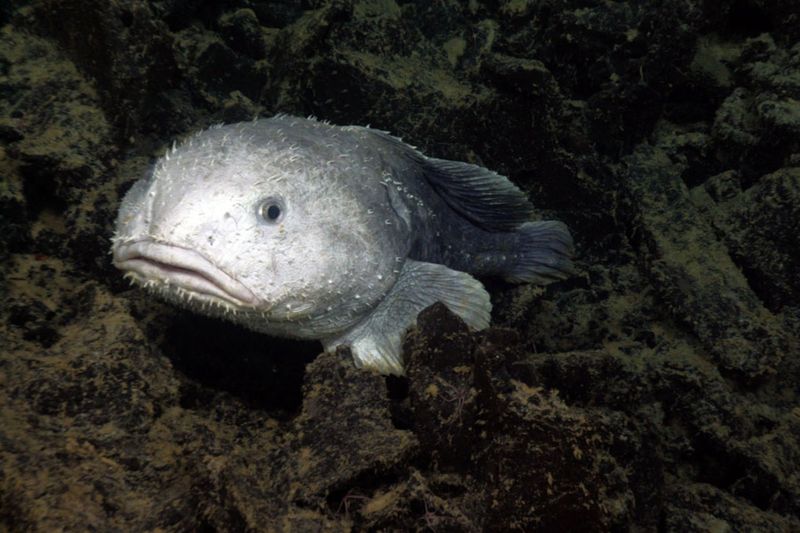
The blobfish is an infamous deep-sea resident, known for its gelatinous appearance that seems both comical and sad. Residing in the dark depths off the coasts of Australia and New Zealand, it faces little human contact.
Its blobby form is adapted to withstand high-pressure environments, appearing more fish-like underwater than on land. The blobfish’s unique look has made it a symbol of the bizarre diversity lurking beneath the waves. Ensuring the protection of deep-sea habitats allows these quirky creatures to continue to boggle the minds of those who study them.
Thorny Devil
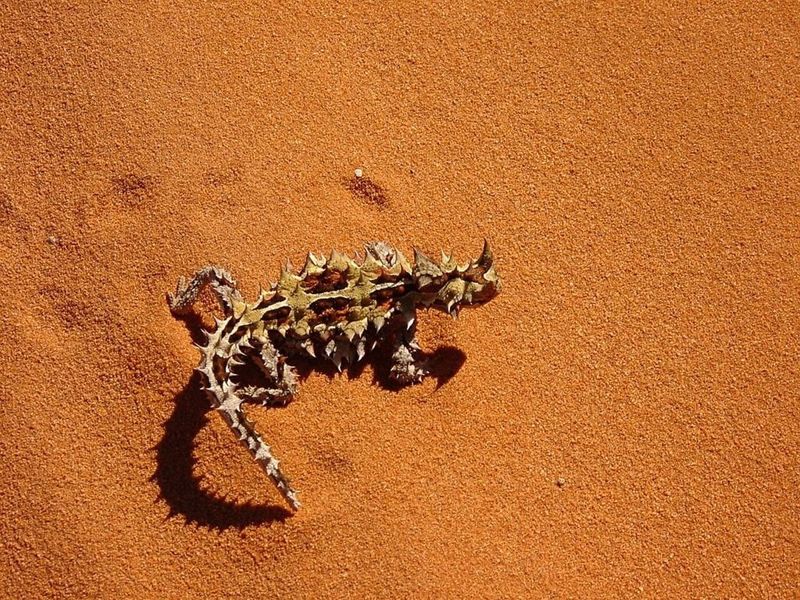
The thorny devil is a desert survivor, its spiky exterior a perfect camouflage against predators in the harsh Australian outback. This small lizard’s spines provide protection and collect dew, directing water to its mouth.
Its peculiar gait and the ability to change colors add to its mystique as an adaptation specialist. The thorny devil embodies the resilience of life in extreme conditions, showcasing nature’s inventive adaptations. Protecting desert habitats ensures these fascinating creatures can continue their solitary wanderings through their arid realm, a testament to survival against the odds.
Frilled Shark
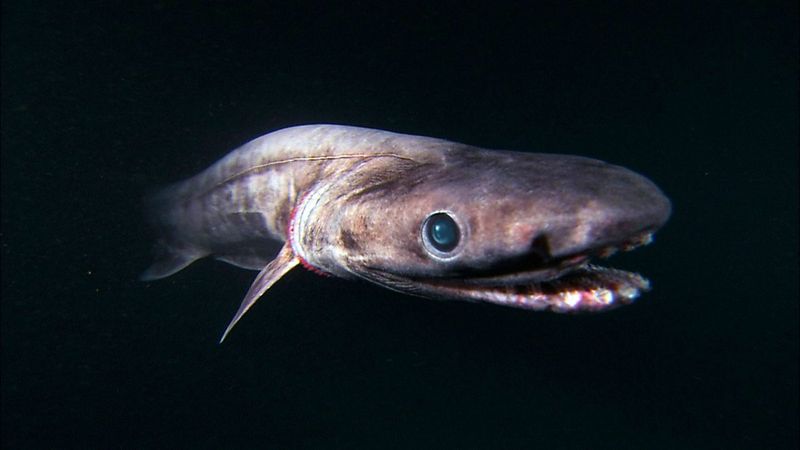
The frilled shark is a living fossil, its lineage tracing back millions of years, resembling prehistoric marine life. Found in the deep waters of the Atlantic and Pacific Oceans, this shark’s serpentine body and frilled gills evoke ancient sea tales.
Its elusive nature and remote habitat add to its mystique, with sightings rare and fascinating. Despite its fearsome appearance, the frilled shark is a slow-moving predator, living in the shadowy depths. Protecting deep-sea environments is crucial for the preservation of these ancient creatures, allowing them to glide silently through the ocean’s mysteries.
Pangolin
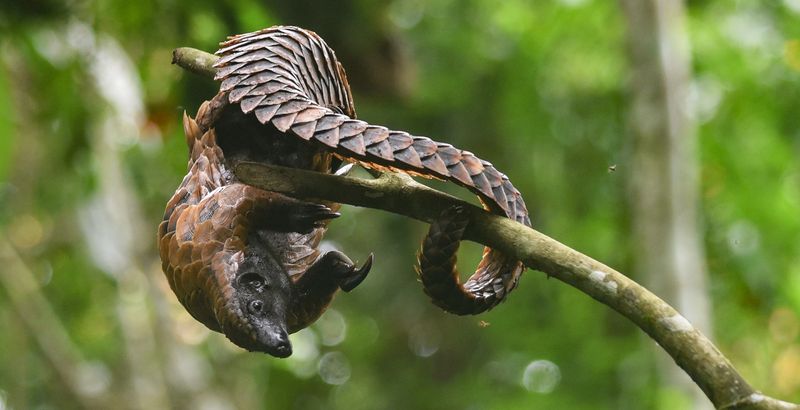
The pangolin is nature’s armored enigma, covered in protective scales that make it look more like a medieval creation than a mammal. Found in parts of Africa and Asia, this insectivore rolls into a ball when threatened, its scales providing defense.
Its unique appearance and behaviors have made it one of the most trafficked animals, posing significant conservation challenges. Efforts to curb illegal trade and habitat destruction are vital for the survival of these fascinating creatures. The pangolin’s existence highlights the need for global cooperation in wildlife conservation.
Venezuelan Poodle Moth
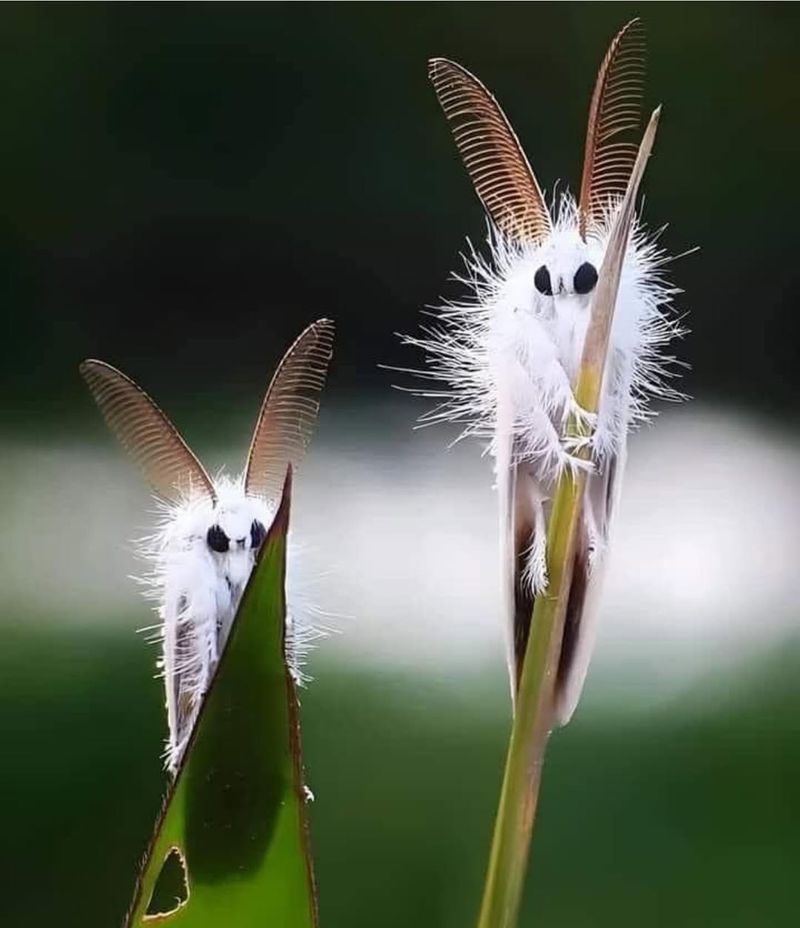
The Venezuelan poodle moth is a whimsical wonder of the insect world, resembling a cross between a moth and a fluffy poodle. Discovered in Venezuela, its furry body and large, feathery antennae create a surreal appearance.
This moth’s unique look has captured imaginations, though little is known about its behavior or ecology. Its discovery underscores the mysteries that still await in nature, sparking curiosity and wonder. Protecting its natural habitat ensures the survival of such peculiar species, inviting further exploration and understanding of the world’s diverse life forms.
Red-Lipped Batfish

The red-lipped batfish is a peculiar denizen of the Galapagos, known for its distinctive bright red lips that create a startling contrast against its sandy habitat. Unlike typical fish, it uses its modified fins to “walk” along the ocean floor.
This unique adaptation allows it to hunt effectively in its environment, showcasing nature’s unconventional solutions to survival. The red-lipped batfish’s bizarre appearance and behavior make it a favorite subject for marine biologists and photographers. Protecting the marine ecosystems of the Galapagos is essential to preserving these captivating creatures.
Indri
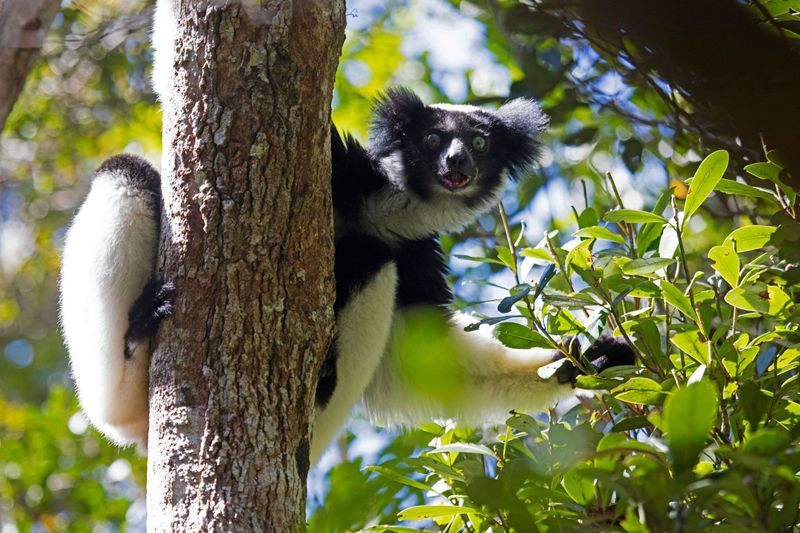
The indri is a remarkable lemur, renowned for its haunting vocalizations and large size. Native to the rainforests of Madagascar, its black and white fur and expressive face create an almost human-like appearance.
The indri’s calls echo through the forest, serving as a communication tool among groups and enhancing its ethereal presence. Conservation efforts are crucial to protect its diminishing habitat, ensuring future generations can admire its haunting songs and unique beauty. The indri symbolizes the intricate connections within ecosystems and the urgent need for preservation.
Peacock Mantis Shrimp
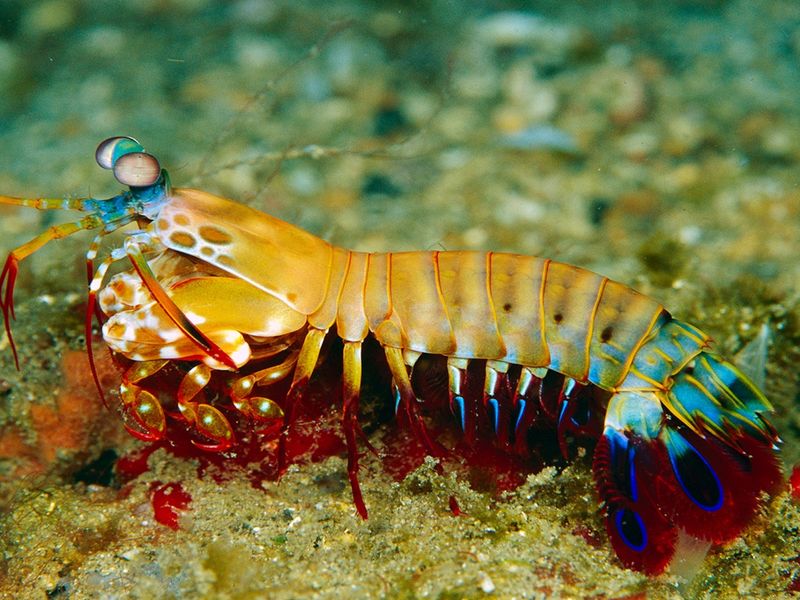
The peacock mantis shrimp is a spectacle of color and power, wielding club-like appendages capable of delivering one of the fastest strikes in the animal kingdom. Its vivid, rainbow-colored exoskeleton dazzles as it hunts in coral reefs.
It possesses extraordinary visual acuity, detecting polarized light and a wide spectrum of colors, aiding in its predatory lifestyle. The mantis shrimp’s combination of beauty and might makes it a fascinating subject for marine enthusiasts. Protecting its coral reef habitat is essential to sustaining the populations of these explosive, radiant creatures that continue to mesmerize onlookers.
Gharial
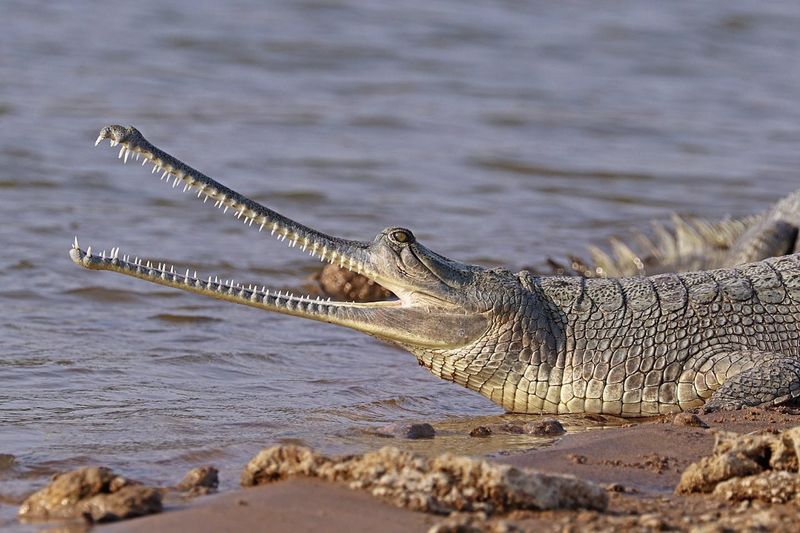
The gharial is a crocodilian oddity, native to the rivers of India and Nepal, known for its long, narrow snout and numerous sharp teeth. This specialized snout aids in catching fish, its primary diet.
Despite its fearsome appearance, the gharial is not a threat to humans and plays a crucial role in maintaining aquatic ecosystems. Conservation initiatives are vital for its survival, as habitat destruction and pollution pose significant threats. Ensuring the preservation of river habitats helps protect these ancient, slender-snouted reptiles that add to the biodiversity of our planet.

